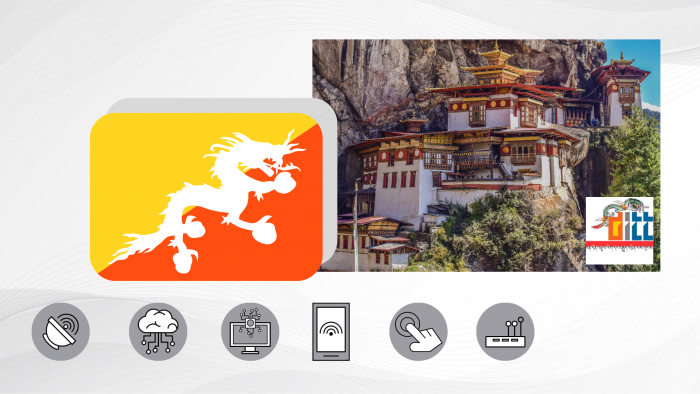 Support for Drupal 7 is ending on 5 January 2025—it’s time to migrate to Drupal 10! Learn about the many benefits of Drupal 10 and find migration tools in our resource center.
Support for Drupal 7 is ending on 5 January 2025—it’s time to migrate to Drupal 10! Learn about the many benefits of Drupal 10 and find migration tools in our resource center.New Drupal 8 Multi-Site Distribution Eases Website Management Effort of a Government
How does a nation-state unify its web presence to deliver citizen services effectively to enhance Gross National Happiness?
Bhutan is a South-Asian state known for its commitment to human rights. As pioneers of the Gross Happiness Index (GHI) over Gross Domestic Product (GDP), the online well-being of citizens is thus a high priority.
Department of Information Technology and Telecom (DITT) , the nodal department for IT infrastructure, was responsible for managing the websites of different government entities. While there were many standard features to these websites, they employed various technologies to build them, and therefore, maintenance was difficult and costly. It was primarily due to three reasons :
- They had 24 websites built using different technology stacks with disparate designs and functionality.
- Technology transfer did not occur with the routine transfer of web admins, resulting in a lack of knowledge in maintaining various systems.
- The sites were vulnerable to hacking and virus attacks due to a lack of security updates and code maintenance.
Bhutan has 20 districts (Dzongkhags) and four self-governing municipal corporations (Thromdes), all of which had websites. They have 15 Dzongkhag Thromdes and 18 Yenlag Thromdes, though only four were self-governed.

Drupal 8 was chosen for its capability of building distributions and availability of deployment system like Aegir.
Goals & requirements
DITT decided to create a centralized system built on a single technology to simplify the maintenance of all websites. They chose Drupal as the unifying technology for this. Drupal is an Open-Source Web Content Management System. Incidentally, it is also one of the preferred technologies for the Government of India and many other governments across the world.
The project followed a Build-Train-Transfer (BTT) model. DITT prepared a system detailing in consultation with Zyxware Technologies, who then developed the underlying system and trained DITT staff. DITT started deploying its websites on this system. You may refer to examples on any of the following links :
Solution
Zyxware Technologies created a Drupal technology-based central site generation platform with functions and features identified through the requirements gathering. We assisted DITT in rebuilding 24 sites that were previously running on divergent platforms. Capacity building, capability enhancement, and training of web admins were part of the project, which Zyxware Technologies undertook. DITT now possesses the capability to build websites for other municipal corporations too.
The central site generation platform resides at DITT servers, and their personnel operate it. Web admins at DITT can create many sites using this platform with a single click. It generates instances of the original site loaded on the platform with a standard feature-set, which they can map to the respective domain names of the Dzongkhags.
DITT will manage the site generation platform and apply all security updates and code maintenance, automatically updating the websites generated. The web admins managing each site can customize the website with new colors, logos, and layout structure to make their site unique. Thus while being distinctive, all the sites stay homogenous in terms of their information structure, ease of use, and backend operation. It also ensures that a one-time training will enable them to operate any website despite transfers.
Implementation
Zyxware Technologies implemented the project in the offshore-onsite model. While we developed the system at our offices in Trivandrum, India; the platform was built and deployed at the client location by us visiting the client location. To manage anticipated load and future scalability, we did load balancing so that the 24 sites are always up by serving the request from one of the three dedicated servers.
Technical specifications
- Total Control Admin Dashboard - To create a dashboard for selected roles. The dashboard provides easy access to different areas of the website.
- Sitemap module - To generate a sitemap which will give an overview of the site to the visitors.
- Panelizer - It was used to create two different layouts for the landing page and thus the layouts can be customized for each of the 24 sites according to the client’s requirements.
- Radix layouts - Provides a wide range of layouts that can be integrated to the panelizer. Two options, the two column layout and the three column layout from the radix layouts were used in the panelizer for creating two displays for the website.
- Quicktabs and Blocktabs modules - To display blocks in a tab view or as an accordion.
- Workflow - To create different states for selected content types. The states can be draft, needs review, needs approval, publish immediately or schedule. Three roles, content creator, content reviewer and content publisher can make the transitions between the states.
- Scheduler - To schedule the publishing of a content on a specified date.
- Printfriendly - To print the page that’s currently viewed.
- Easy Breadcrumb - It uses the current URL and page’s title to create a configurable bread crumb.
- Crop and Image Widget Crop - They were used to crop the images uploaded in the specific ratio before saving the content.
Department of IT & Telecom, Bhutan Ministry of Information and Communications
